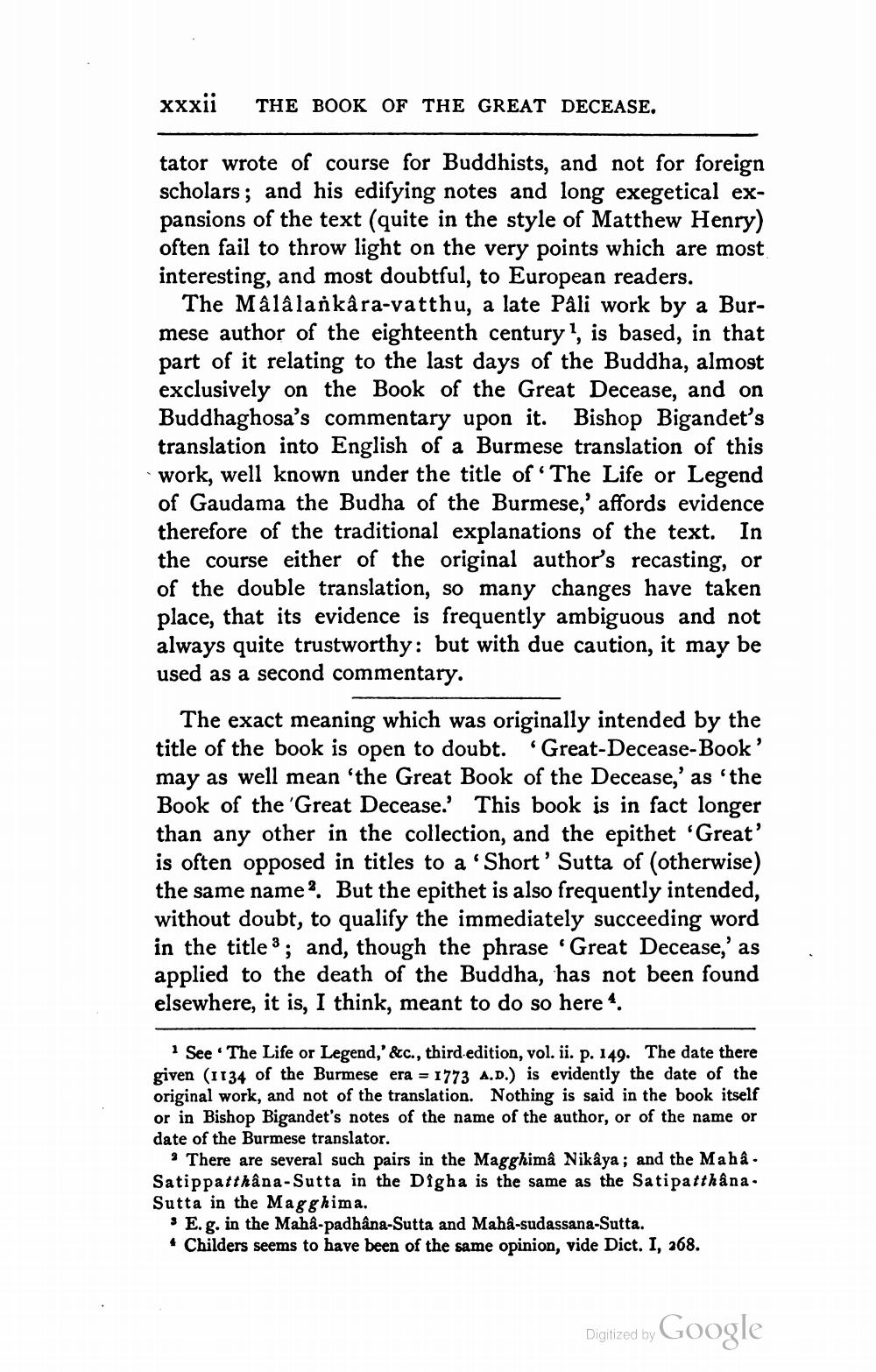________________
xxxii THE BOOK OF THE GREAT DECEASE.
tator wrote of course for Buddhists, and not for foreign scholars; and his edifying notes and long exegetical expansions of the text (quite in the style of Matthew Henry) often fail to throw light on the very points which are most interesting, and most doubtful, to European readers.
The Mâlâlankâra-vatthu, a late Pâli work by a Burmese author of the eighteenth century1, is based, in that part of it relating to the last days of the Buddha, almost exclusively on the Book of the Great Decease, and on Buddhaghosa's commentary upon it. Bishop Bigandet's translation into English of a Burmese translation of this work, well known under the title of 'The Life or Legend of Gaudama the Budha of the Burmese,' affords evidence therefore of the traditional explanations of the text. In the course either of the original author's recasting, or of the double translation, so many changes have taken place, that its evidence is frequently ambiguous and not always quite trustworthy: but with due caution, it may be used as a second commentary.
The exact meaning which was originally intended by the title of the book is open to doubt. 'Great-Decease-Book' may as well mean 'the Great Book of the Decease,' as 'the Book of the Great Decease.' This book is in fact longer than any other in the collection, and the epithet 'Great' is often opposed in titles to a 'Short' Sutta of (otherwise) the same name. But the epithet is also frequently intended, without doubt, to qualify the immediately succeeding word in the title; and, though the phrase 'Great Decease,' as applied to the death of the Buddha, has not been found elsewhere, it is, I think, meant to do so here 1.
1 See The Life or Legend,' &c., third edition, vol. ii. p. 149. The date there given (1134 of the Burmese era = 1773 A.D.) is evidently the date of the original work, and not of the translation. Nothing is said in the book itself or in Bishop Bigandet's notes of the name of the author, or of the name or date of the Burmese translator.
* There are several such pairs in the Magghimâ Nikâya; and the MahâSatippatthâna-Sutta in the Digha is the same as the SatipatthânaSutta in the Magghima.
E. g. in the Maha-padhâna-Sutta and Mahâ-sudassana-Sutta.
* Childers seems to have been of the same opinion, vide Dict. I, 268.
Digitized by
Google




